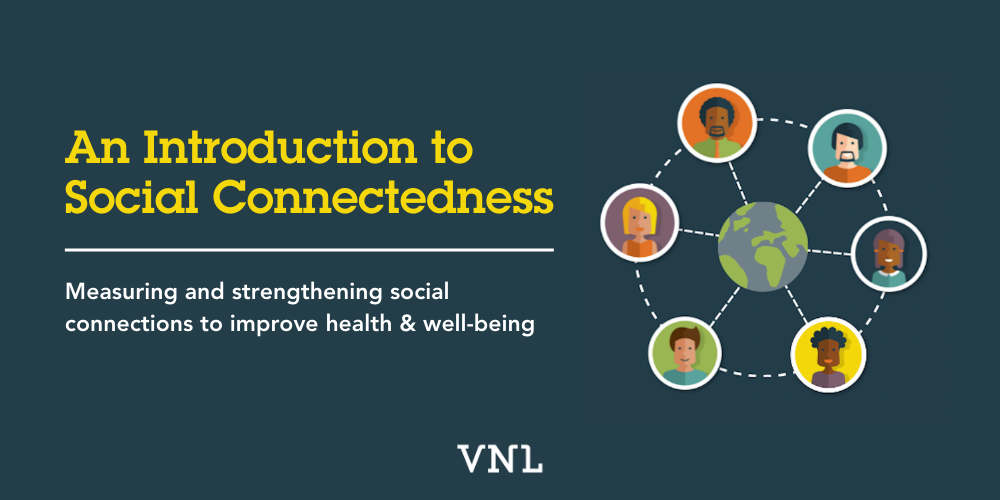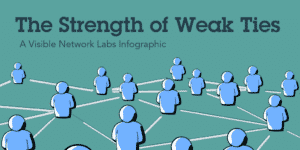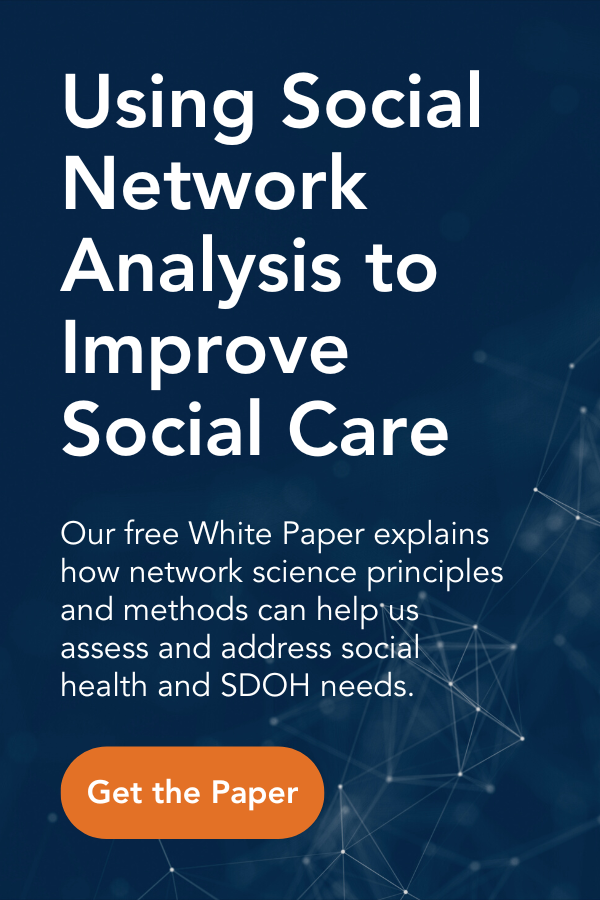
Social connectedness is a difficult concept to describe in one sentence. Generally speaking, it is the experience of belonging to a social community or network – a feeling of being supported and connected to others who provide value and meaning in your life. Social connectedness is proven to be a critically important social determinant of health. Our relationships with family, friends, neighbors, and others directly influence our health outcomes and well-being. That’s why our focus at Visible Network Labs is strengthening social connectedness with a network science approach.
How Does Social Connectedness Affect Health and Well-being?
Social connectedness affects our health through three distinct pathways. While we’re all affected by them, they may affect us in different ways or degrees.
- Social connectedness directly, physically impacts health. For example, spending time with loved ones is shown to reduce stress and improve cardiovascular and immune system performance.
- Social connectedness helps us improve our health-related behaviors. For example, having a close family member who owns a car makes it easier to get to a doctor’s appointment.
- Social connectedness affects us psycho-socially by providing meaningful interactions, emotional support, and a sense of belonging and being valued by the community. It helps meet the core human need for interconnection with others.
Take a moment to reflect on your own life and the special people you are connected to. How do they impact your health and well-being. You most likely can think of many ways that they affect you, through all three mechanisms of action.
Social Isolation, Loneliness, and other Adverse Connectedness is On the Rise
Following the COVID-19 Pandemic researchers have observed a dramatic increase in the number of people who report they feel lonely or socially isolated. Objective measures of connectivity seem to back this up: People have smaller social networks and less engagement than previously was the case, and the trend shows no signs of stopping. Why are these types of adverse social connectedness on the rise?
While COVID lockdowns and social distancing are common and obvious answers, these trends are not new. The rise of the internet, and decline of face-to-face interaction, has been a decade in the making. People have increasingly sacrificed quality for quantity, favoring large friend lists on Facebook, even if they go years without talking to most of them.
Given the strong connection between social connectedness and positive health outcomes, this decline in connectedness is an alarming cause for concern. Strong connections to others don’t just happen – and fixing this problem will require innovative and collaborative solutions. That’s why Visible Network Labs exists: to find new, network-science based solutions to strengthen social connectedness.
Different Groups Have Different Levels of Social Connectedness
Social connectedness is present to some degree throughout lives, but it ebbs and flows. A child has a small network that relies on close family, teachers and friends. As we mature and get older our network tends to grow as well, with more family, coworkers, peers, neighbors, friends, and other community members. However as we reach older age we tend to see our networks begin to shrink. Friends and connections pass away and aren’t replaced as quickly as before. Our mobility is limited, making it hard to meet new people. Many older Americans lack technology and internet for fostering virtual connections, and many lose a spouse or companion. This leaves them at a higher risk of social connectedness than their younger peers.
Another population that experiences higher than average levels of social isolation are veterans. While active-duty troops are embedded in close-knit groups in the form of battalions and units, they return home to find themselves cut off from these sources of support. With a unique experience that their older friends and family cannot empathize with, many veterans feel lonely and develop more serious mental health problems. These two groups demonstrate the ways that social connectedness can mitigate serious issues like suicide or poor health, especially among marginalized and high-risk groups.
Mapping and Measuring Social Connectedness
Here at Visible Network Labs we take a social network analysis (SNA) approach to measure social connectedness. While many methods rely on traditional survey methods, like asking a person how often they feel lonely, SNA allows us to directly map the connections that someone has to others in their network. These objective measures, when paired with more subjective questions, provide a more complete perspective on the various types of social connectedness.
For example, we can differentiate between groups that feel lonely, but are objectively well connected, and those that are both objectively and subjectively cut off from others. By factoring in more attributes like trust and dependency, we can create highly accurate overall scores for social connectedness that take into account multiple measures.
Using Social Connectedness Data to Improve Health and Well-Being
Measuring social connectedness provides important data that we can use to identify and fill gaps in support. While many practitioners screen individuals for their social needs, almost no one takes time to ask about their social support and strengths. When we map out an individual’s social connectedness and sources of support it becomes easy to identify the places where they need help. Instead of providing a laundry list of community resources, we can provide a single targeted referral that helps them with the few things they aren’t already getting help with.
Mapping and measuring social connectedness also provides the ongoing means to evaluate your impact and improve your programs. By establishing a baseline measurement of social connectedness, you can compare people over time to see if their support is growing, whether they trust their network, and how dependent they are. These are powerful metrics to demonstrate your impact and validate your progress.
More Social Connectedness Resources
Looking for more information beyond this introduction to social connectedness? Visit our social connectedness resource library. These additional websites and resources cover more social connectedness-related topics. Have a suggestion for a resource to add? Leave a comment below and it might make it into the list during our next revision to this guide.
- ScienceDirect Social Connectedness Topic Page: This great article from ScienceDirect is an in-depth literature review on different definitions and measurers for social connectedness, especially drawing on the field of psychology.
- The Creature Times: This fun blog includes a number of great articles on the topic of social connectedness and its impact on our well-being. They take a whimsical take on this heavy subject to keep things a bit lighter than normal.
- How Young People View Social Connectedness: This Report was created in partnership between VNL and the Annie E. Casey Foundation and includes in-depth research results about the unique way that young people view and conceptualize social connectedness.

About the Author: Alex Derr, M.P.A.
Director of Marketing & Communications
Alex joined VNL in 2017, originally supporting our events. He now helps manages our communications and marketing strategy and content development work. Alex creates blogs, infographics, reports, and other content while managing our web and social media presence. He also runs our email marketing campaigns, tracks analytics, and conducts market research to drive our strategy. He supports our entire team with copywriting, graphic design and research, and helps with events, webinars, demos, and other online learning. When he isn’t at work Alex spends his time climbing 14ers (30 done, 28 to go!) and blogging on his own website, The Next Summit Blog.
|
|
Thank you for Signing Up |

More Social Care Resources




